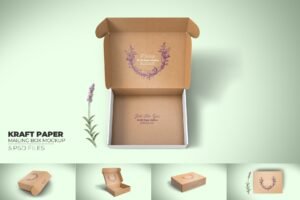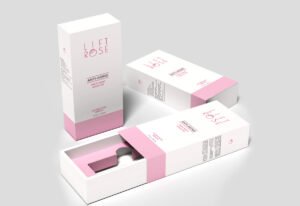In the world of packaging, rigid box packaging stands out as a remarkable and essential element. This guide aims to provide a comprehensive understanding of rigid box packaging, exploring its various aspects and significance.
I. Introduction
Rigid box packaging refers to a type of packaging that is sturdy, firm, and provides superior protection and presentation. It is widely used across different industries due to its numerous benefits.
II. Types of Rigid Box Packaging
The materials used in rigid box packaging are diverse, with cardboard being a common choice for its affordability and recyclability. Wood is also used for a more luxurious and premium look. Different styles such as square, rectangular, and custom shapes are available to meet specific product requirements.
III. Characteristics and Benefits
One of the key characteristics of rigid box packaging is its strength and durability. It can withstand handling, transportation, and storage without easily getting damaged. The protective qualities ensure that the packaged items remain intact. Aesthetically, rigid boxes offer an attractive and sophisticated appearance, making them ideal for presenting high-quality products. This provides excellent branding opportunities, as the box can be customized with logos, colors, and unique designs to create a distinct identity.
IV. Design Considerations
When it comes to design, size and shape are crucial. The box should be appropriately sized to snugly fit the product, preventing movement and damage. Graphics and printing techniques play a vital role in creating an appealing look. From high-resolution images to embossing and foil stamping, these techniques add a touch of elegance. Functional aspects like easy opening and closing mechanisms, as well as compartments for additional items, enhance the user experience.
V. Manufacturing Process
The manufacturing process of rigid box packaging involves several steps. First, the materials are selected and cut to the desired size and shape. Then, they are assembled using gluing or other joining methods. Quality control measures are implemented at every stage to ensure the boxes meet the required standards. Any flaws or defects are detected and corrected before the packaging is dispatched.
VI. Environmental Impact
In today’s environmentally conscious world, rigid box packaging is also evolving to meet sustainability goals. Efforts are being made to use recycled materials and make the packaging more recyclable. Eco-friendly inks and adhesives are being employed to minimize the environmental footprint. Many companies are also exploring innovative ways to reduce waste and promote sustainable packaging practices.
VII. Applications in Different Industries
The cosmetic and personal care industry heavily relies on rigid box packaging to showcase their products in an attractive manner. The food and beverage sector uses it for premium and gift packaging. Luxury goods, such as watches, jewelry, and high-end electronics, benefit from the luxurious look and feel that rigid boxes provide. Additionally, other industries like pharmaceuticals and confectionery also utilize this type of packaging.
VIII. Trends in Rigid Box Packaging
Emerging designs and technologies are constantly shaping the rigid box packaging landscape. New materials with enhanced properties are being developed. Digital printing allows for more flexibility and shorter lead times. Consumer preferences for minimalist and sustainable packaging are also influencing trends. Brands are constantly innovating to stay ahead in the market and meet the evolving demands of consumers.
IX. Cost Considerations
The cost of rigid box packaging depends on various factors such as the materials used, the complexity of the design, and the quantity. It is important to balance the quality and expense to ensure a cost-effective solution. However, investing in high-quality packaging can often lead to increased sales and customer satisfaction, offsetting the initial cost.
X. Conclusion
In conclusion, rigid box packaging is a vital aspect of modern packaging. It combines strength, style, and functionality to provide an outstanding packaging solution. As we look to the future, it will continue to adapt and evolve to meet the changing needs of businesses and consumers. By understanding its characteristics, benefits, and manufacturing process, we can make informed decisions and utilize rigid box packaging to its fullest potential.






